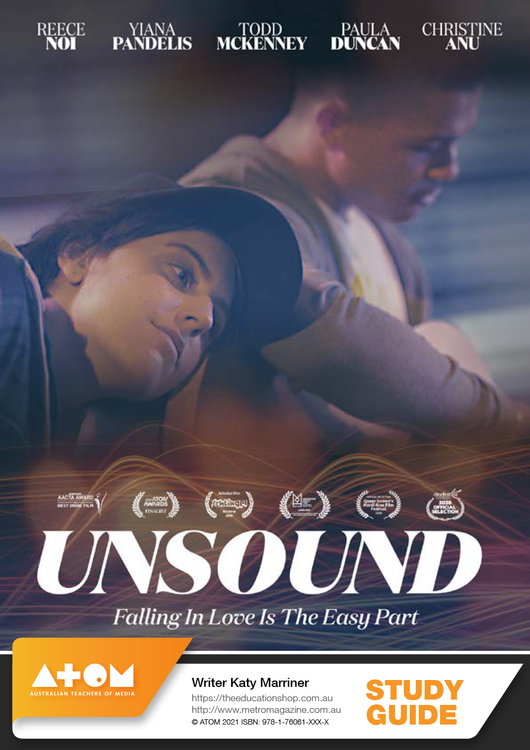The Niminjarra story relates how two young men undergoing higher training in men's ceremonial law become impatient and leave the ceremony to return to their mother. They transform into giant snakes (Jila Kujarra) and journey west to meet her. A different group of spirits, the Niminjarra who have human form, travel up from the south. They discover the tracks of the giant snakes and decide to hunt them. The Niminjarra follow the snakes' tracks across the sandhill country of the Great Sandy Desert. Near Paji Waterhole they think they have caught the snakes in a cave and try to smoke them out. But the Jila Kujarra use magic to create many smaller snakes and they escape.
Two Pukurti (initiated men) watch on this scene from a distance. One of them prophesises in song that they will be the ones to catch and kill the Jila Kujarra, but the Niminjarra mock him and threaten to kill him. The Pukurti track the Jila Kujarra. They catch the snakes at the edge of Lake Dora and spear them in the head. The Pukurti then fetch the Niminjarra and a great fire is prepared to cook the snakes. But the Niminjarra do not prepare the snakes properly. The snakes are put on the fire without being scaled or gutted. Once cooked the snakes are too big to be served on leafy branches, so the Niminjarra form a human table with their own bodies. When they cut down the snakes' length, the snakes’ bladders burst and the Niminjarra are all killed in an explosion of scalding urine. They fall down on the salt lake and become rocks in this sacred site, Kumpu Pirntily.
After this, the Jila Kujarra rise from the ashes and fly, flaming across the sky towards their mother in the west. The mother cries to them to 'slow down!' They are travelling too quickly, almost bursting into flames. As they approach she pierces the surface of the dry lake. The snake spirits dive in through the surface and she follows them to the underground water table beneath Lake Dora. There they remain in the subterranean water, still in snake form.
Curriculum Links
National Programs and Standards for Teachers The National Professional Standards for Teachers specify many key areas in which teachers should develop programs inclusive of Aboriginal and Torres Strait Islander students and communities. Programs also need to be developed which are informed by a knowledge of Aboriginal and Torres Strait Islander histories, cultures and languages. Here are two examples of key areas of development from the *Standards:
Standard 1.4 – 'Know students and how they learn'
- Develop teaching programs that support equitable and ongoing participation of Aboriginal and Torres Strait Islander students by engaging in collaborative relationships with community representatives and parents/carers.
Standard 2.4 – 'Know the content and how to teach it'
- Provide opportunities for students to develop understanding of and respect for Aboriginal and Torres Strait Islander histories, cultures and languages.
General Capabilities
- The Australian Curriculum specifies seven General Capabilities which are to be developed throughout all learning areas. Three of these General Capabilities are directly relevant for this study guide.
Intercultural Understanding
- In the Australian Curriculum, students develop intercultural understanding as they learn to value their own cultures, languages and beliefs, and those of others. They come to understand how personal, group and national identities are shaped, and the variable and changing nature of culture. Intercultural understanding involves students learning about and engaging with diverse cultures in ways that recognise commonalities and differences, create connections with others and cultivate mutual respect.
Critical and Creative Thinking
- This capability combines two types of thinking: critical thinking and creative thinking. Though the two are not interchangeable, they are strongly linked, bringing complementary dimensions to thinking and learning. Critical thinking is at the core of most intellectual activity that involves students learning to recognise or develop an argument, use evidence in support of that argument, draw reasoned conclusions, and use information to solve problems. Examples of critical thinking skills are interpreting, analysing, evaluating, explaining, sequencing, reasoning, comparing, questioning, inferring, hypothesising, appraising, testing and generalising.
- Creative thinking involves students learning to generate and apply new ideas in specific contexts, seeing existing situations in a new way, identifying alternative explanations, and seeing or making new links that generate a positive outcome. This includes combining parts to form something original, sifting and refining ideas to discover possibilities, constructing theories and objects, and acting on intuition. The products of creative endeavour can involve complex representations and images, investigations and performances, digital and computer-generated output, or occur as virtual reality.
Literacy
- In the Australian Curriculum, students become literate as they develop the knowledge, skills and dispositions to interpret and use language confidently for learning and communicating in and out of school and for participating effectively in society. Literacy involves students listening to, reading, viewing, speaking, writing and creating oral, print, visual and digital texts, and using and modifying language for different purposes in a range of contexts.
There are no reviews yet.
Leave a Review
 Quick Shop
Quick Shop